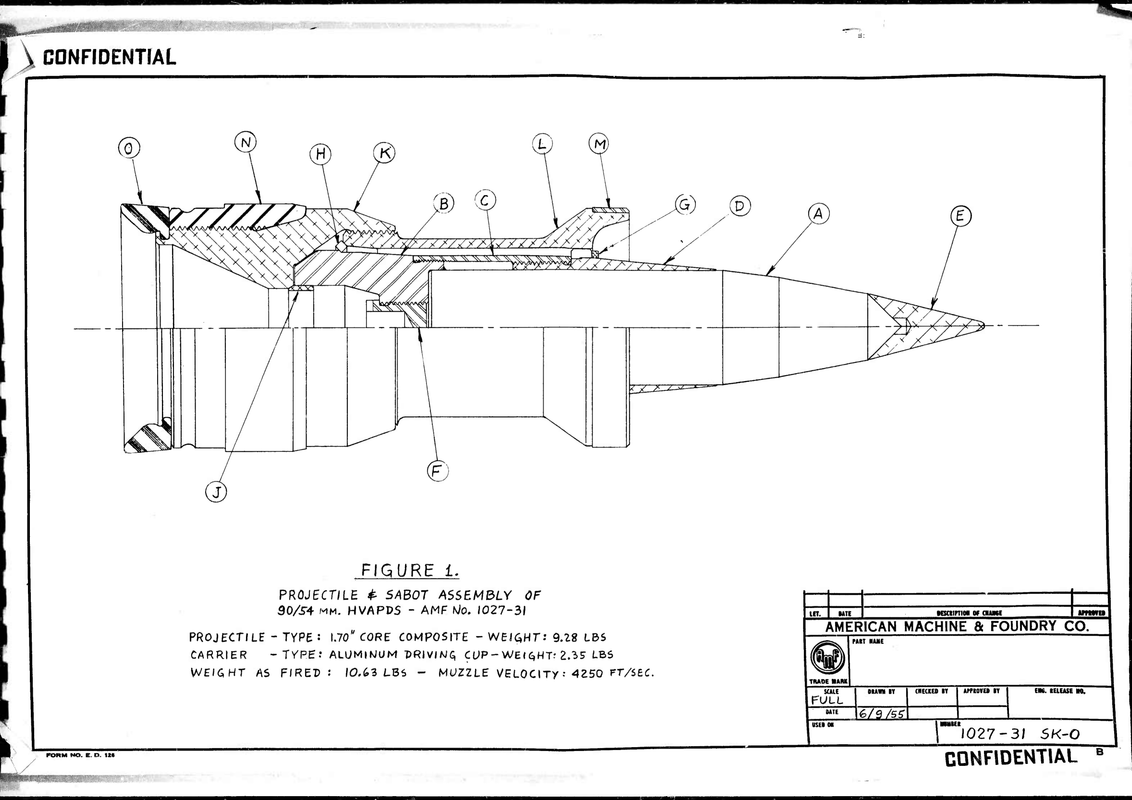The reason why you can’t is because they only existed in a proof of concept phase for tests leading up to APFSDS (called HVAP-DS equiv. historically).
Neither «УБР-412П» nor «УБР-365П» were produced for any period of time, and as far as testing and accounts of use, I doubt there was more than 100 of either shot.
First, HVAPDS is the american name for APDS, and not APFSDS.
Secondly, if the 85mm BR-365P round was experimental, then why examples of it were captured in the field during the Korean war? Why was data for it present in soviet firing tables? Why germans were able to get their hand on some in 1961?
Spoiler

Spoiler

1 Like
As I said, the translation to English conforms most closely to the definition of HVAP-DS, as that was the nature of Soviet and German APDS.
Nobody mentioned APFSDS.
Examples? I don’t see any.
Because… It was tested and later overshadowed by APFSDS?
That’s ripped directly from a random forum, and here is the statement verbatim
“According to him these two pages are from a 1961 german report. He said nothing else about it and didn’t respond when another user asked to see the full document, but he left these performance figures derived from live firings…”
There is then an image copy/pasted from a Tankograd forum.
Did you forget that Germany was a pivotal portion of the SSSR from 1954-1979? Especially in development, and they were the hosts of countless training grounds for T-62 and T-64 crews, as well as research and development.
Why wouldn’t they have a diagram of these?
Which APDS is this, T137 or T65?
That must be the T65. Here is the T137.
2 Likes
A comparison of penetration of AP and APCR shell from the soviet 76mm gun.
Spoiler
Nothing much, it briefly describes both AP and APCR shells and their effects on the target.
The pretty much only interesting part is the penetration values, first column is AP, the second one is subcaliber.
The document does not give the mass of the projectile, so I had to manually 3D model it to estimate its mass:
Spoiler
The performance of this shot aganst 0° target was significantly worse than expected from extrapolation ofother data. The expected BL against a 38,1mm/0° target is supposed to be around 2700fps. Something must be going on. Could be excessive yaw of the projectile, perhaps.
Idk, it’s a pretty light core.
Compared to 20mm AP →

A 20mm Pzgr. 40 core has almost twice the weight.

Resulting in 2" penetration when using the other tungsten core as reference.
Use real life data as a reference. In a 1943 test soviet 45mm APCR against Tiger I upper side (T/D = 4,1) obtained a ballistic limit of ~840m/s. This is a good ballistic limit from 8 shots, and the armor quality on that tank was pretty good, which gives us a good reference point to estimate the BL for the .40in.(10,16mm) core against a 38,1mm plate of 269-311 BHN used in that US test.
But you’re comparing arrowhead APCR rounds with a large steel sheath against the performance of just a tungsten core.
For the 45mm APCR the penetrator makes less than a 1/3 of the shell weight.
Obviously the steel sheath can not be entirely ignored.
That’s… actually a good point. I wasn’t considering the possibility that a different relative mass of the core carrier might change the ballistic limit in a significant way.
If your theory is correct, the APCR shells with higher fraction of their mass in the carrier would perform better, relative to the absolute mass of their tungsten cores.
I will look into this.
1 Like
Isn’t that how Gaijin sets up their formula?
Yes. They put a huge emphasis on the total weight of the shell so that Soviet APCR gets to their historical standard, which of course left everyone else behind who used APCR with heavier cores instead of the Soviet approach of saving as much resources as possible.
Easy fix would just be to have two formulas for APCR penetration. One that considers the total weight (arrowhead design) and another which mainly focuses on the penetrator.
Yes, and its a wrong approach. Watch carefully this video here:
Not all mass from the HVAP carrier is equal. Some of it slides off the sides of the core with negligeble effect on the penetration process. Some of it stays and pushes it into the target for an extended time. See the sketch here:
Spoiler

2 Likes














